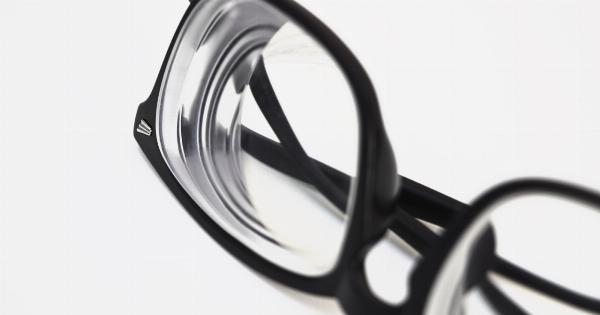Myopia, also known as nearsightedness, is a common vision problem that affects millions of people worldwide. It is characterized by blurry distance vision while close-up objects appear clear.
The prevalence of myopia has been steadily increasing over the years, particularly in urban areas and among younger populations. While wearing glasses or contact lenses can correct the vision temporarily, it is crucial to explore effective treatments for slowing the progression of myopia.
This article delves into various evidence-based methods and interventions that have shown promise in addressing myopia growth.
1. Outdoor Activities and Natural Sunlight
Studies have shown a strong association between spending more time outdoors and reduced myopia progression in children.
Natural sunlight seems to play a protective role against myopia development, possibly due to its high levels of vitamin D and the brightness of outdoor environments. Encouraging children to engage in outdoor activities, such as sports or hobbies, can be an effective strategy for slowing myopia growth.
2. Atropine Eye Drops
Atropine eye drops have emerged as a viable treatment option for slowing the progression of myopia. Atropine is a medication that helps relax the eye’s focusing muscles and dilate the pupil.
Low-dose atropine eye drops have shown significant reductions in myopia progression rates without causing significant side effects or compromising visual acuity. It is typically prescribed by an eye care professional and should be used under their guidance.
3. Multifocal Contact Lenses
Multifocal contact lenses, which contain different lens powers in different zones, have also demonstrated efficacy in controlling myopia progression.
These lenses utilize peripheral defocus, which redirects light away from the retina’s central portion. By creating myopic defocus in the periphery, multifocal contact lenses can help reduce the stimuli for eye elongation and myopia progression.
4. Orthokeratology (Ortho-K)
Orthokeratology, commonly referred to as Ortho-K, involves the wearing of specially designed rigid gas-permeable contact lenses during sleep.
These lenses gently reshape the cornea overnight, temporarily correcting myopia and providing clear vision during the day without the need for glasses or contact lenses. Ortho-K has shown promising results in slowing myopia progression, especially in children.
5. Soft Bifocal Contact Lenses
Soft bifocal contact lenses work on a similar principle to multifocal lenses, but they have a softer and more flexible design. These lenses provide clear vision for both near and distance objects, compensating for any focusing imbalances in the eye.
Studies have shown that soft bifocal contact lenses can effectively slow myopia progression in children and adolescents.
6. Vision Therapy
Vision therapy, also known as orthoptic therapy, encompasses a range of specialized eye exercises and activities aimed at improving visual skills, such as eye coordination, focusing ability, and eye movements.
While vision therapy is primarily used to treat binocular vision disorders, recent research suggests its potential benefits in controlling myopia progression. A tailored vision therapy program can be designed by an optometrist to target specific visual deficiencies contributing to myopia development.
7. Environmental Modifications
Making certain modifications to the indoor environment can help reduce eye strain and potentially slow myopia progression. Adequate lighting, proper ergonomics, and maintaining a comfortable reading distance from screens are essential.
Limiting the time spent on close-up activities, such as prolonged reading or excessive screen use, can also mitigate the risk of myopia progression.
8. Pharmacologic Intervention
In addition to atropine eye drops, other pharmacologic interventions are currently under investigation for their potential in slowing myopia progression. These include pirenzepine gel, ciliary muscle inhibitors, and dopamine agonists.
Although more research is needed to establish their safety and effectiveness, they hold promise as future treatment options.
9. Myopia Control Spectacles
Myopia control spectacles, also known as myopia control glasses, incorporate specific lens designs or coatings that aim to reduce peripheral hyperopic defocus and induce myopic defocus.
By manipulating the peripheral optics of the eye, these spectacles can help manage myopia progression. They are typically prescribed for full-time wear, especially during activities that involve prolonged near work.
10. Genetic and Behavioral Factors
While treatment modalities play a crucial role in slowing myopia growth, it is important to consider the influence of genetic and behavioral factors. Myopia tends to run in families, indicating a strong genetic component.
Encouraging healthy visual habits, such as taking regular breaks during near work and practicing good posture, can complement treatment methods and contribute to overall myopia control.
Conclusion
Slowing the growth of myopia requires a multi-faceted approach, considering the individual’s lifestyle, genetic predisposition, and available treatment options.
Outdoor activities, atropine eye drops, multifocal contact lenses, Ortho-K, and vision therapy have all demonstrated efficacy in controlling myopia progression. Environmental modifications, pharmacologic interventions, myopia control spectacles, and addressing genetic and behavioral factors also contribute to effective myopia management.
Consulting with an eye care professional is necessary to determine the most suitable treatment strategies tailored to each individual’s specific needs.






























